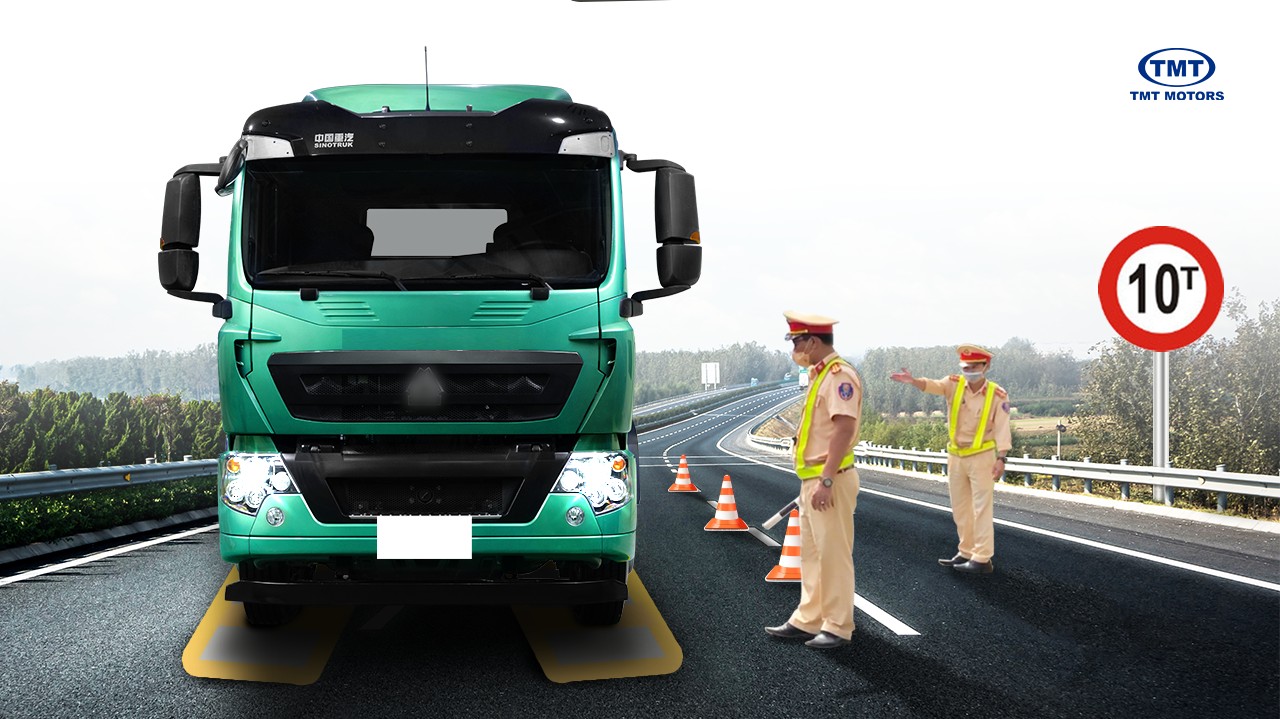In the realm of transportation and trucking, the terms gross vehicle weight and payload often cause confusion. Despite sounding similar, they are fundamentally different concepts. Understanding this distinction is crucial for every driver and vehicle owner to ensure safe and efficient vehicle operation while adhering to the law. This article from Xe Tải Mỹ Đình, your trusted source for truck information, will clarify these terms.
What is Gross Vehicle Weight? What is Payload?
To begin, let’s define each concept clearly:
Gross Vehicle Weight (GVW) is the maximum total weight of a vehicle when it is operating on the road. This includes:
- Curb Weight (CW): The weight of the vehicle itself when empty, including fuel, oil, and standard equipment.
- Weight of Driver and Passengers: The estimated weight of the driver and passengers in the vehicle.
- Payload: The maximum weight of cargo that the vehicle is permitted to carry.
Therefore, gross vehicle weight is the sum of all components contributing to the vehicle’s total weight when it’s in operation.
Payload, on the other hand, refers specifically to the maximum weight of cargo that the vehicle is allowed to transport. This weight can vary depending on the type of goods and manufacturer’s specifications.
Simple Calculation Formulas:
- Payload = Gross Vehicle Weight – Curb Weight – Weight of Driver and Passengers
- Gross Vehicle Weight = Curb Weight + Weight of Driver and Passengers + Payload
Illustrative Example:
Consider a truck with a curb weight of 3 tons and a manufacturer-specified gross vehicle weight of 7 tons. If the driver weighs 70kg (0.07 tons), the payload of this truck is calculated as follows:
Payload = 7 tons – 3 tons – 0.07 tons = 3.93 tons.
In this case, the truck can carry a maximum of 3.93 tons of cargo while still complying with the allowed gross vehicle weight of 7 tons.
 Diagram illustrating Gross Vehicle Weight and Payload components
Diagram illustrating Gross Vehicle Weight and Payload components
Key Concepts Related to Vehicle Payload
Beyond gross vehicle weight and payload, several related terms are important for drivers to distinguish to avoid confusion and ensure compliance:
- Gross Vehicle Weight Rating (GVWR): This is the maximum gross vehicle weight specified by the manufacturer for safe vehicle operation. The GVWR must always be greater than or equal to the actual GVW of the vehicle when loaded. Exceeding the GVWR can be dangerous and is a legal violation.
- Gross Combination Weight (GCW): Applicable to tractor-trailers, GCW is the total weight of the tractor unit, the trailer, and the cargo on both.
- Gross Combination Weight Rating (GCWR): Similar to GVWR, GCWR is the maximum allowable gross combination weight specified by the tractor manufacturer.
- Towing Capacity: Refers to the towing capability of a tractor unit, which is the maximum weight of cargo a tractor can tow in a trailer. Towing capacity is calculated by subtracting the GVW of the tractor unit from the GCWR.
 Diagram differentiating payload and related weight concepts
Diagram differentiating payload and related weight concepts
Legal Regulations on Vehicle Payload in Vietnam
In Vietnam, vehicle payload is strictly regulated under Decree 100/2019/ND-CP (amended by Decree 123/2021/ND-CP) of the Government regarding administrative penalties in the field of road and railway traffic. Key regulations include:
- Passenger Vehicles: Must not exceed the number of seats and cargo weight specified by the manufacturer.
- Cargo Vehicles: Must not exceed the curb weight, payload, and gross vehicle weight specified by the manufacturer.
- Tractor-Trailers: Must not exceed the curb weight, payload, gross vehicle weight, and towing capacity regulations.
Violations of vehicle payload regulations are subject to severe penalties. Fines can range from 4 million to 50 million VND for individuals, and double for organizations, depending on the severity of the violation and vehicle type. Additionally, violating drivers may have their driving licenses revoked and be required to unload cargo to comply with regulations.
 Image depicting traffic law regulations on vehicle payload
Image depicting traffic law regulations on vehicle payload
Conclusion:
Understanding the difference between gross vehicle weight and payload, along with related concepts, is fundamental knowledge for anyone involved in the transportation industry. Adhering to payload regulations not only ensures traffic safety and avoids penalties but also contributes to vehicle longevity and cost-effective operation.
If you are looking for high-quality, durable trucks that strictly adhere to payload standards, contact Xe Tải Mỹ Đình immediately via hotline 1900 5454 62 or visit our website https://tmt-vietnam.com/ for the best advice and support. We are always ready to accompany you on every journey.
